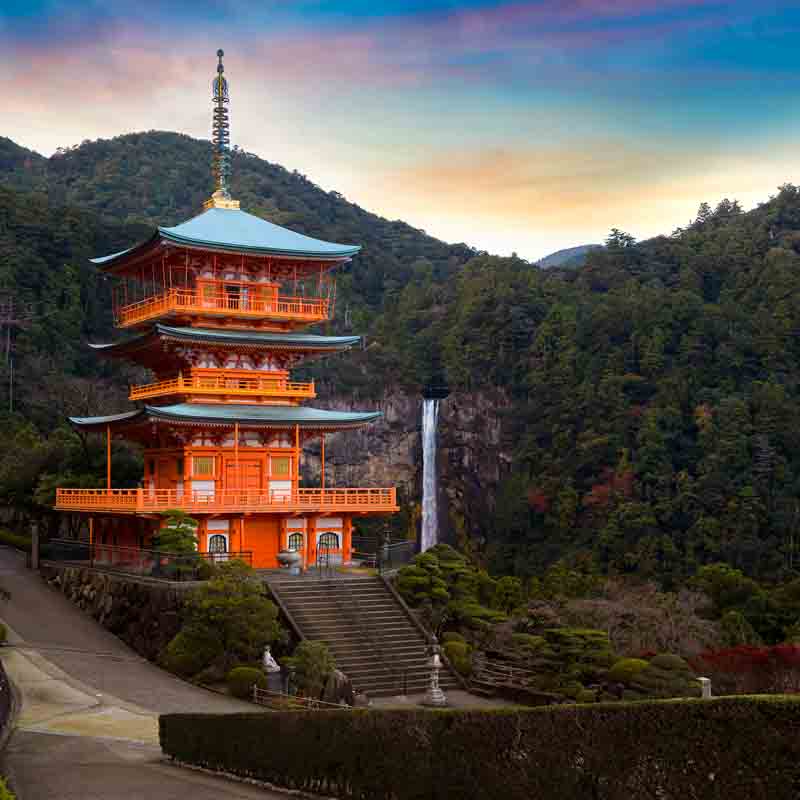
Kumano Kodo Pilgrimage Trail – Overview of the Routes
Throughout the southern Kansai area, there is a network of ancient pilgrimage trails known as Kumano Kodo that connect the three grand shrines of Kumano in Japan. These trails have been used by pilgrims for over a thousand years and are now popular among hikers who come to experience the spiritual and cultural significance of the Kumano region. There are several Kumano Kodo routes, each with its own unique history, cultural significance, and scenic beauty. In this blog, we will explore the different Kumano Kodo routes.
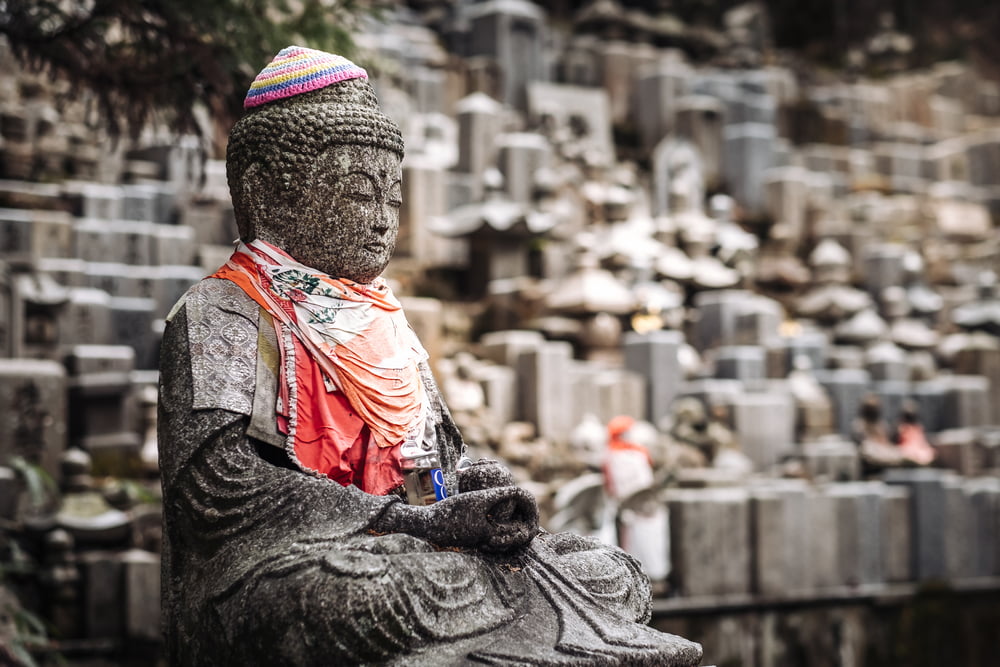
Buddhist statues in Koyasan on the Kumano Kudo Kii Peninsula
The Kumano Kodo hiking path winds through the mountainous Kii Peninsula, south of Osaka, and is one of the most fulfilling and rewarding journeys in Japan. The “Kumano Old Road,” which was once a holy pilgrimage route designated for emperors and samurai, is now open to all travellers and adventurers, with plenty of unbelievable photogenic shrines and breathtaking scenery along the way. The Kodo, or “old ways,” have been performed for more than a 1000 years and have played an essential part in the region’s global heritage designation. Other than the Camino de Santiago, they are the only pilgrimage routes to have acquired the World Heritage designation.
Some of Japan’s top ‘iconic locations,’ including temples, forests, and waterfalls considered to enliven the spirit, can be visited on moderate to strenuous hiking options that last a few hours to several days. There is no shame in taking the buses that travel between the attractions and trailheads, even though purists might want to hike the complete route.
Walkers needed a means to travel between the sacred sites on the Kii Peninsula, so pilgrimage routes were developed. The three Kumano shrines, Hongu Taisha, Hayatama Taisha, and Nachi Taisha, collectively known as Kumano Sanzan, are located in the centre of this religious area.
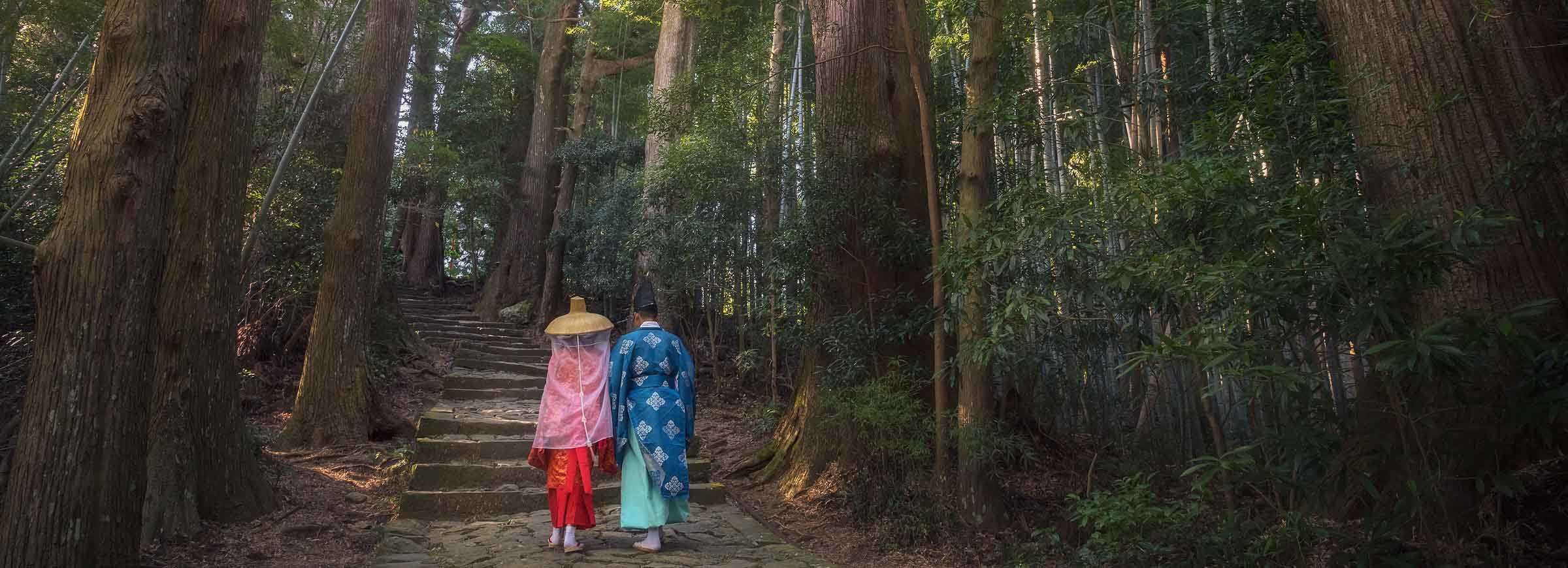
Traditional dress on the Kumano Kodo pilgrimage – not compulsory by the way
The Kumano Sanzan were well-known temples in Japan by the 12th century, attracting pilgrims from Kyoto, Osaka, and elsewhere. The pilgrimage trails were intended to be more than just a means to get to the three shrines; those who passed through encountered a religious experience that was challenging due to the dangerous mountainous terrain.
The Trails
The Kodo pilgrimage paths link the shrines, as well as Kyoto, Koyasan (the centre of Shingon Buddhism), Yoshino and Omine (centres of mountain worship), and Ise (Japan’s most significant shrine). The majority of the coastal paths no longer exist due to development, however, there are still a number of mountain trails and passes that remain. The Kumano Kodo has loosely speaking seven trails, the Nakahechi, Ogumotori-goe and Kogumotori-goe, Kohechi, Ohechi, Iseji and Omine Okugake routes. The three most-travelled routes of the Kumano Kodo are the Nakahechi, Kohechi, and Ise-ji , with the Nakahechi being by the far most popular, shown below which has walkers traverse from Takijiri oji nearer Tanabe all the way to Nachisan and its waterfall via Hongu.
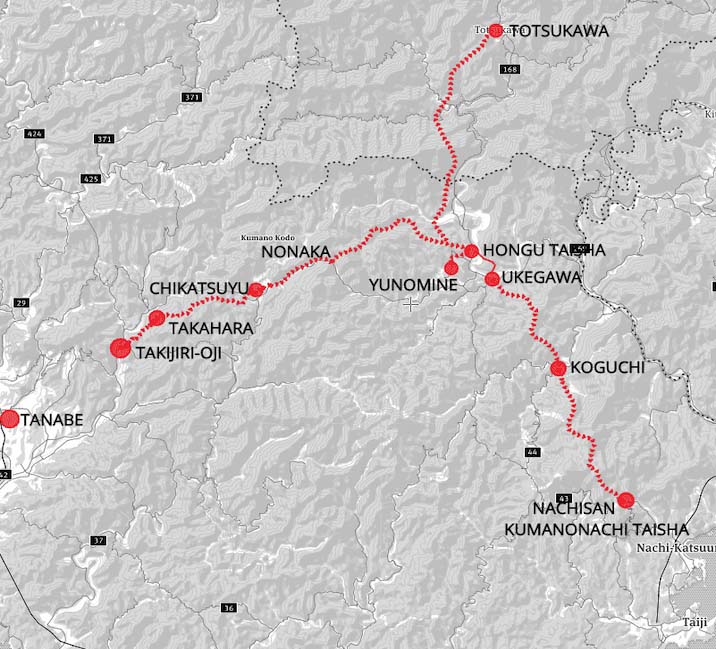
Nakahechi and the end of the Kohechi trail (the Kohechi starts in Koyasan)
Nakahechi Route
Nakahechi is the most popular of the Kumano Kodo trails, which passes through hilly, forested terrain and occasional villages, is well-preserved, and relatively effortless to walk. This route offers stunning views of the Kumano mountains, deep forests, and the Nachi waterfall. Tanabe also referred to as Kii-Tanabe, is the entrance to Kumano and offers a quick glimpse of contemporary life before leaving. It is situated on the Kii Peninsula’s western shore. Spend the evening before your journey filling up on sashimi, yakitori, sake, and the local specialty umeshu (a Japanese apricot liqueur that is occasionally mistaken for “plum wine”). The Shinto shrine Takijiri-ji is situated 40 minutes by bus from Tanabe. For centuries, pilgrims have cleansed themselves in the restorative river waters before starting their journey.
The distance of about 30 kilometres between Takijiri Oji (outside of central Tanabe) and Hongu can be covered in a leisurely two-day trek with a stopover in Chikatsuya Oji, where there are a few minshukus for overnight stays. The trail descends into Hongu Taisha, providing a magnificent view of the shrine’s enormous torii gate.
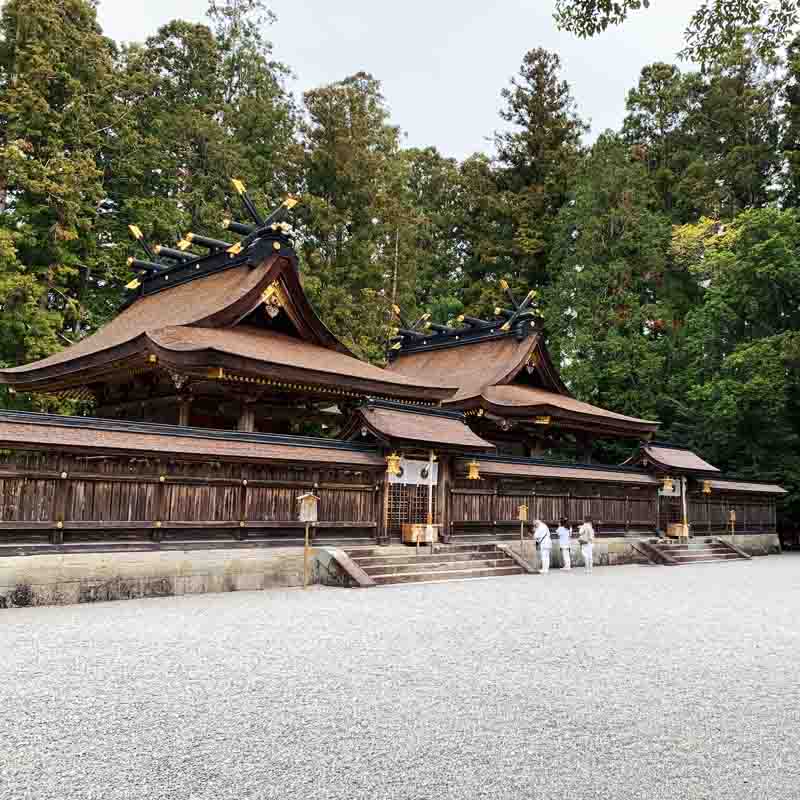
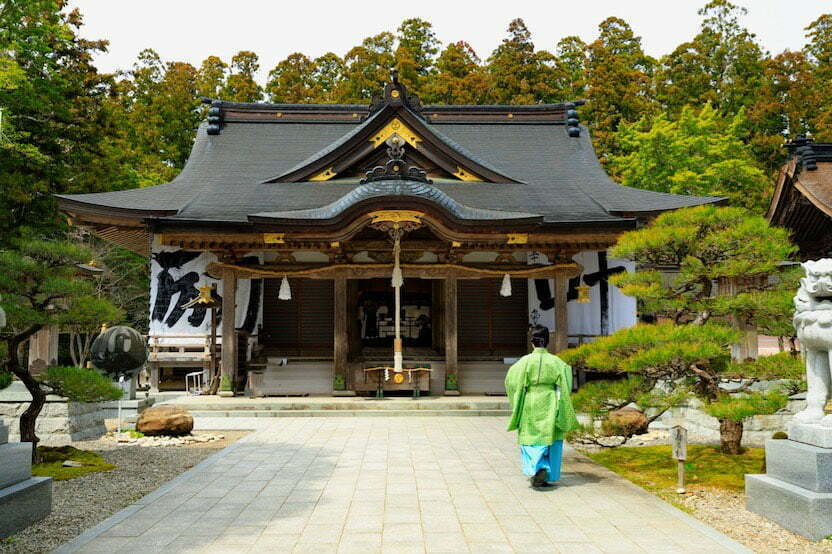
Hongu Temples
It is a 25-minute hike from Takahara to the bus stop, and another 25 minutes to walk from the bus stop to Tsugizakura. Many visitors choose to take the bus instead of the following 13 km hike, which has an elevation increase of 830 m.
Fit hikers can travel the next 21.5 km (about 8 hours) to Kumano Hongu Taisha, the first of the larger shrines, perched over a tree-covered ridge, via remote villages, forest paths, and an uplifting lookout point. The contemporary Kumano Hongu Heritage Centre, located close to the shrine, offers excellent museum-calibre English explanations of the route and World Heritage Sites. Nearby is the nearly 40-metre-tall largest torii (Shinto shrine entrance) in all of Japan.
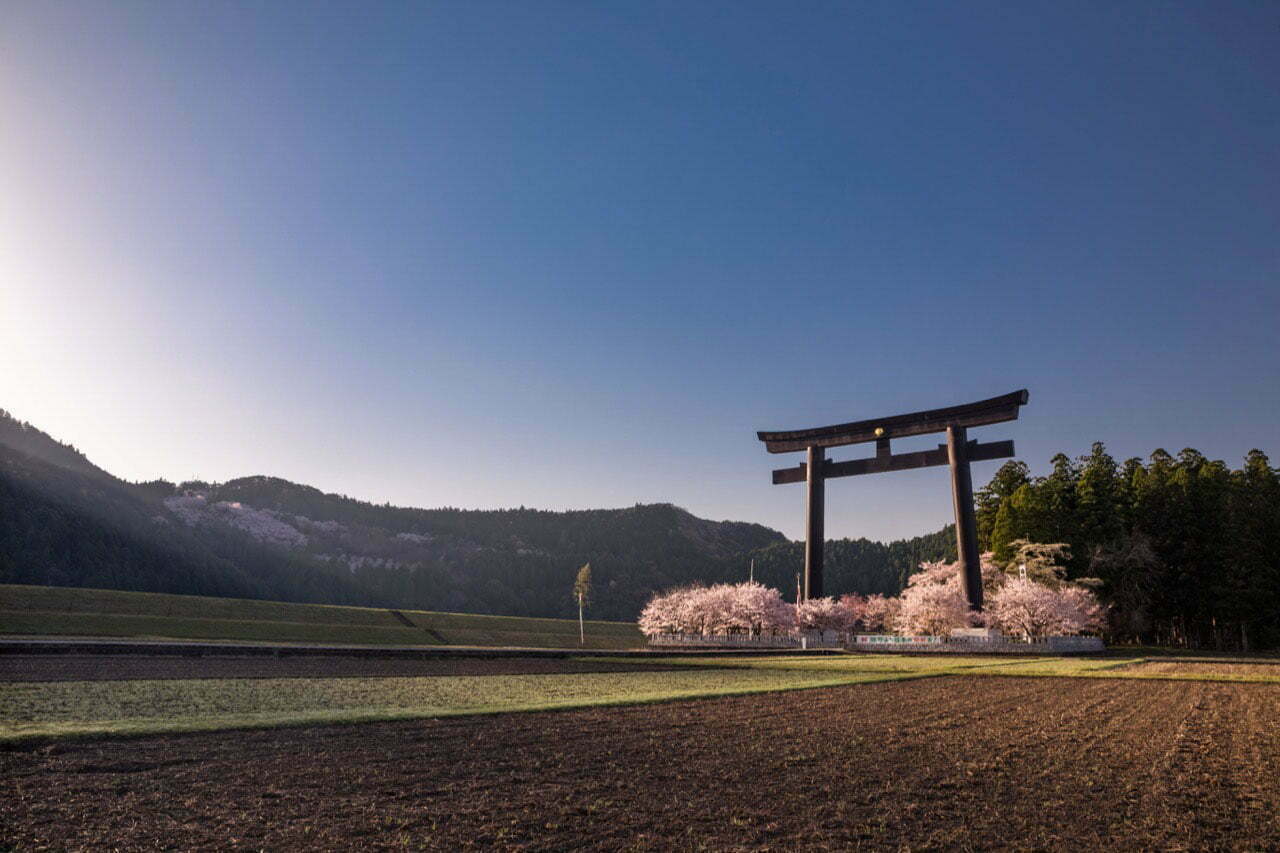
Japan’s largest Shinto torii gate sits amid rice paddies in Hongu
The walk continues with the hardest section of the hike, the ominously named Dogiri-zaka (body-breaking slope), which is about 5km straight uphill for an elevation gain of 800m, begins halfway through the remaining 27.5km (roughly 2 days) of the journey. It has a long history of being infamous; a hiker in the 13th century who was a poet said, “It is impossible to describe precisely how tough it is.” Your reward is the end of the walk at Nachi-no-taki, Japan’s tallest waterfall (133m), which is the backdrop to the brilliant orange pagoda across the valley and the subject of endless photographs. The nearby Kumano Nachi Taisha, the second largest temple in the region, is home to the waterfall, which is said to be a kami (god).
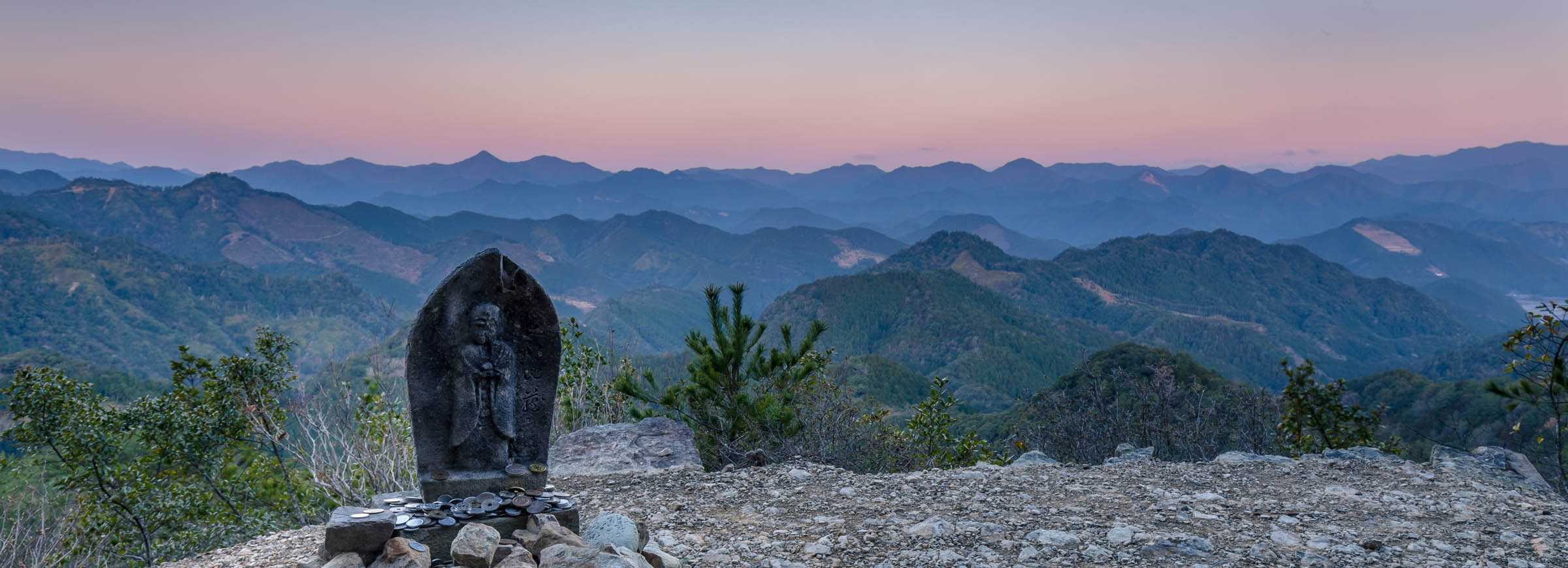
The view along the way to Nachisan
Many walkers choose to also go back to Hongu region to take a flat-bottomed boat down the Kumano-gawa River from the Hongu area to the village of Shingu, where the river empties into the vast Pacific, to get to the final shrine, Kumano Hayatama Taisha (or kayaks and motorised boats are also available). The path comes to a fitting conclusion at the shrine, where an 800-year-old pine tree that is also revered marks its end.
Ogumotori-goe and Kogumotori-goe
The Ogumotori-goe and Kogumotori-goe routes are two separate trails that connect Kumano Hongu Taisha to Nachi Taisha. The Ogumotori-goe route is known for its steep inclines, while the Kogumotori-goe route is known for its steep descents. Both of these trails offer stunning views of the surrounding landscapes, and hikers will see a number of historic landmarks such as the Seiganto-ji Temple and the Nachi Taisha.
Ohechi Route
From Tanabe to Nachi Taisha, Ohechi route runs along the coast of the Kii Peninsula, and it’s known for its scenic beauty and historic landmarks. Along the way, hikers will see a number of historic landmarks such as the Kumano Magaibutsu, the Nachi Bay, and the Tonda Coastal Forest. This route is approximately 170 kilometres long and takes around 10 to 14 days to complete. Due to development and the building of contemporary roadways, this trail has all but vanished. Interestingly, Ohechi, Nakahechi, and Kohechi are thought to have seen more than 30,000 people per year at their busiest between the 10th and 15th centuries.
Iseji Route
The Iseji Route connects the Ise Grand Shrine to the Kumano Sanzan shrines. The Iseji Route is approximately 170 kilometres long and takes around 10 to 14 days to complete. Along the way, hikers will see a number of historic landmarks such as the Futami Okitama Shrine, the Meoto Iwa Rocks, and the Kumano Hayatama Taisha. Much of Iseji’s coastal trail has been developed into towns and paved roadways, similar to Ohechi. Today’s stoned or earthen paths are limited to a few limited, isolated sections.
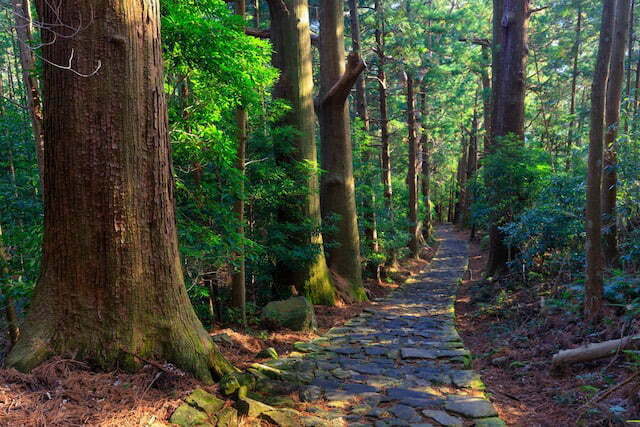
Kohechi Route
The Kohechi Route is a more challenging route that connects Koyasan to Kumano Hongu Taisha. This route runs for approximately 70 kilometres and takes around 6 to 8 days to complete. This trail is known for its mountainous terrain and challenging climbs, but hikers will be rewarded with incredible views of the surrounding mountains and valleys. Along the way, hikers will also see a number of historic landmarks such as the Koyasan Okunoin, the Yatagarasu Shrine, and the Koyasan Daimon. There are over fifty fascinating and beautiful Buddhist retreats that one can stay at in Koyasan before beginning the walk to Hongu. The additional Choishi-Michi walk is another walk from the Jison temple at the bottom of the mountain. It is well worth completing due to, among other things, the 180 ornate stupas from the 12 to 14th centuries that are passed on the trail. The end at the massive Torii gate and temple is a real highlight.
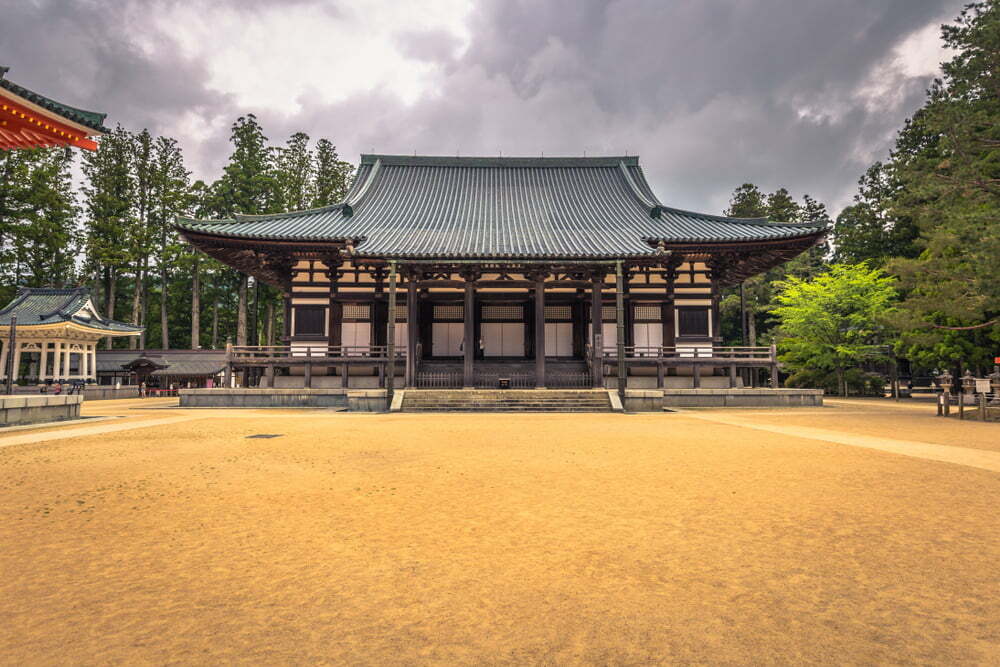
One of the many Koyasan Temples
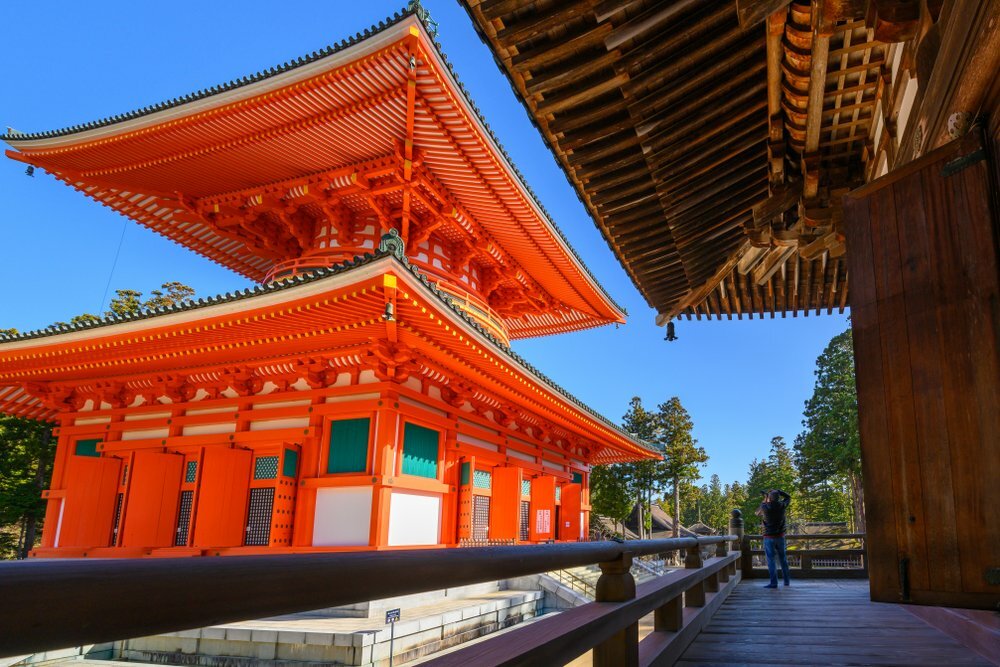
Another of the many temples in Koyasan
Omine Okugake route
Omine Okugake connects Kumano with Yoshino via Mount Omine. Like Kohechi, Omine Okugake is a difficult, lengthy route that mainly follows high mountain ridges and rarely passes any towns. Those who practiced the Shugendo mountain worship sect were the main users of this path.
Day-tripping Kumano
Not a hiker yourself? A day excursion to some of Kumano’s most well-known attractions is possible from Osaka. In roughly 3.5 hours, limited express Kuroshio trains travel around the peninsula to Kii-Katsuura station, where a 25-minute bus ride will take you to the shrine area. Work up a sweat as you climb the main shrine building via a fantastic 800-meter tree-lined arcade to get a taste of hiking. Return to Kii-Katsuura station and continue to Shing and Kumano Hayatama Taisha by train if you have some additional time. From Osaka’s Kansai Airport, catch a train to Hineno, where you can transfer to Kuroshio trains.
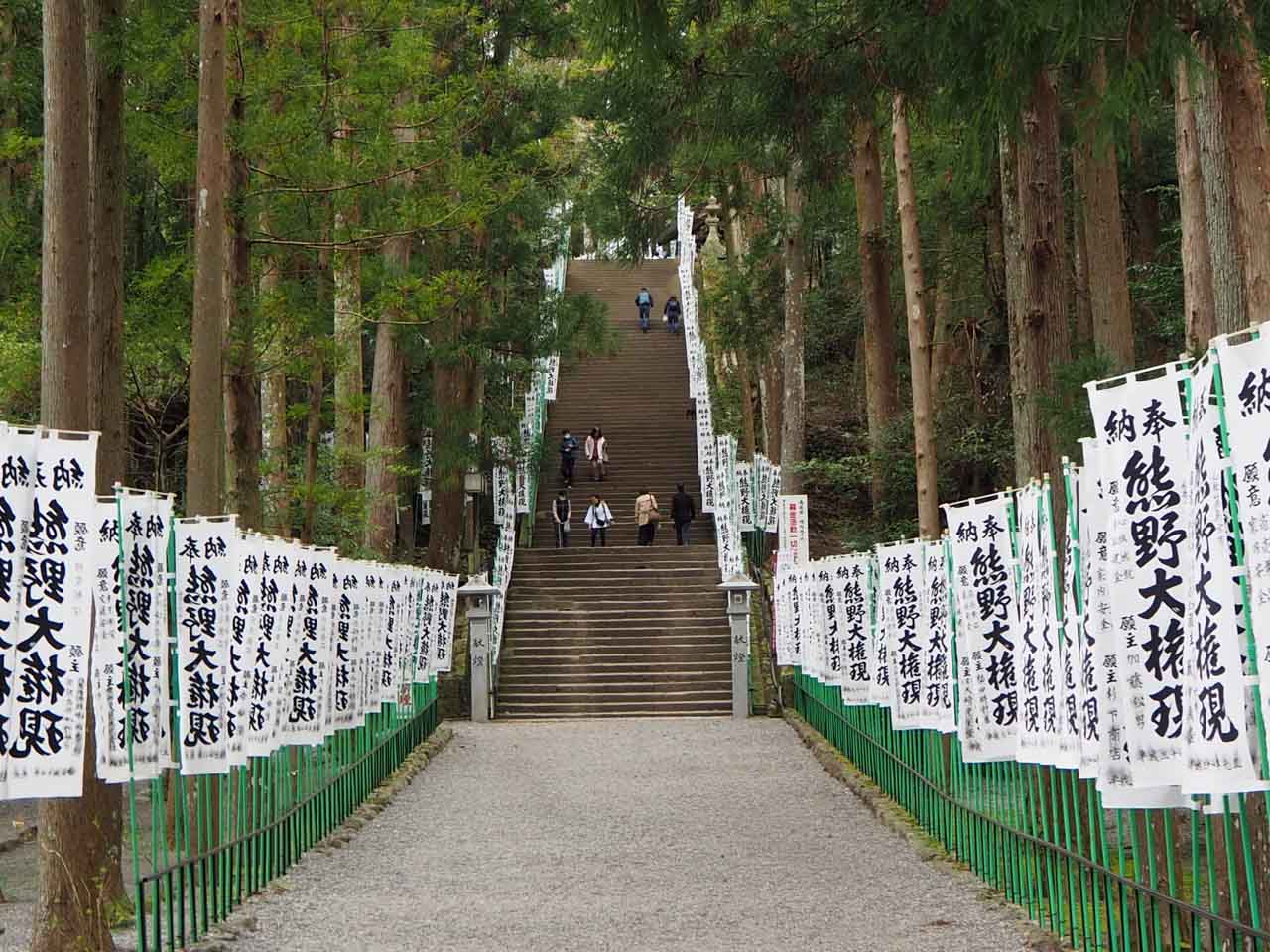
Detours, hot-spring villages and Koya-san
Three connected onsens (hot spring) villages, where inns and waters have soothed bodies and minds for centuries, are an easy bus ride or about a 3.5 km walk from Hongu. It should be noted that it is customary to dress modestly at Japanese hot-spring resorts (the majority are gender-separate); to use changing rooms and tiny towels to cover up; and to ask ahead of time if you have tattoos because many Japanese baths prohibit visitors with tattoos.
A pleasant option is the charming hamlet of Yunomine Onsen, where a stream rushes down through the village’s centre and a few small ryokans (traditional inns) have some exquisitely endearing baths. A sizable indoor-outdoor bathing facility, surrounded by larger inns, can be found in Watarase Onsen.
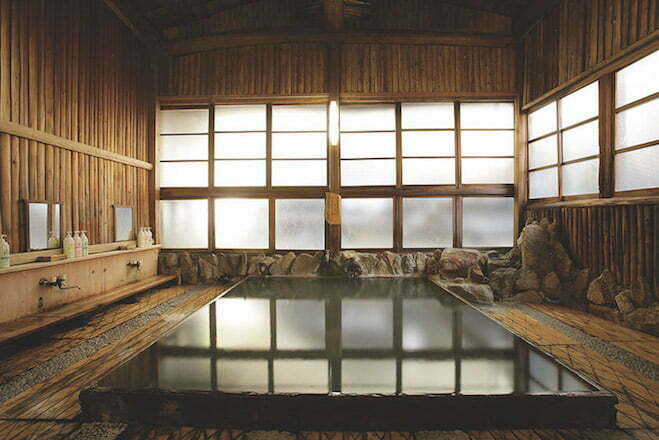
When to go to Nakahechi
Although the Nakahechi route is accessible year-round, during peak seasons (spring and autumn), the weather is the most reliably temperate and reservations are recommended well in advance. Mid-August is also the Obon vacation period, which can be very busy.
Where to stay
While there are accommodations available all over the area, Tanabe and Katsuura have the highest concentration. The path is lined with tiny inns, ryokan, and minshuku in between (family-run inns). Even in recently built lodgings, the majority of accommodations are traditional style with futon bedding on tatami mat floors, shared baths, and traditional cuisine. Most of these inns feel like a trip back in time, particularly in the small villages. The detour is well worth it for accommodations in the hot spring towns close to Hongu, which range in quality from basic to deluxe (though not luxury).
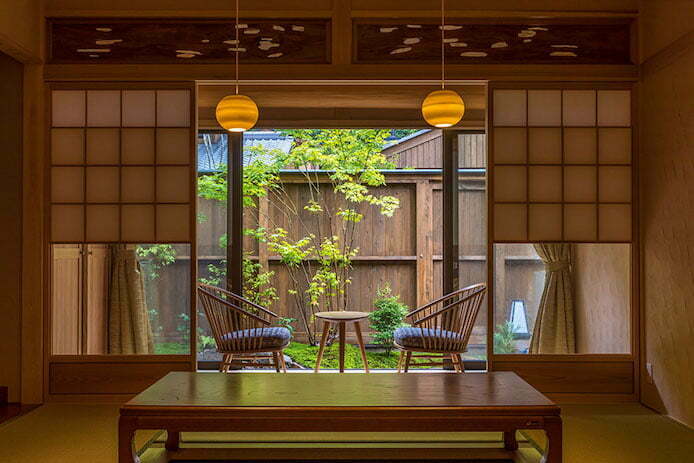
Ryokan guest room
Don’t miss
- Following in the footsteps of past pilgrims such as monks, samurai, emperors, and ascetics Kumano
- The Nachi-taisha Shrine and its shrine are the epitome of the fusion of Shinto and Buddhism.
- Utilising the luggage shuttle services along the way to enable baggage-free travel
How to get there
- Access to the Kii Peninsula’s pilgrimage routes depends on your final destination and how far you are willing to hike. Osaka, Kyoto, and Nagoya are the three cities that are best connected to the region by the Kisei Mainline (also known as the Kinokuni line). However, most walkers start in Osaka as the train connection to Tanabe is just 2 hours and the shortest.
- Take a 30-minute bus from Kii-Katsuura Station (on the JR Kinokuni Line) to the parking area in front of Kumano Nachi Taisha Shrine and Nachi Seigantoji Temple. It takes 15 minutes to travel to Kumano Hayatama Taisha from JR Shingu Station, which is also on the JR Kinokuni Line.
Quick Facts
- The entire pilgrimage route is made up of seven trails
- The traditional paths and their sacred mountains were recognised as a UNESCO World Heritage site in 2004.
- A mythical three-legged crow is the symbol of the Kumano Kodo, and of Japan’s national soccer team
Religious harmony through Shinbutsu-shugo
Before late 19th-century political policy drove them apart, Buddhism and Shinto coexisted amicably as Shinbutsu-shugo, a synthesis of the two religions. The Shinto spirits were viewed as localised representations of Buddhist deities. This was the standard in Japan for over a thousand years.
Buddhism and Shinto were split apart in the 19th century, which resulted in the destruction of numerous temples and Buddhist monuments. Even though it’s relatively uncommon to see Buddhist and Shinto components coexisting in Japan today, Kumano Nachi Taisha Shrine and the nearby Nachi Seigantoji Temple serve as excellent examples of the historical relationship.
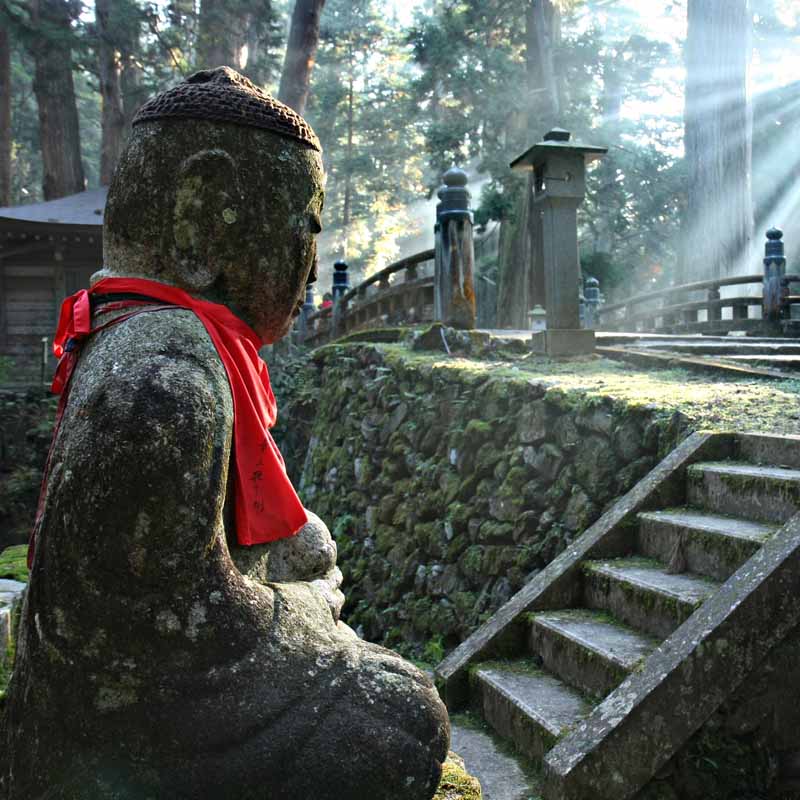
In conclusion, the Kumano Kodo offers hikers a unique opportunity to experience the spiritual and cultural significance of the Kumano region. Each of the seven routes offers its own unique history, cultural significance, and scenic beauty, and hikers can choose the route that best suits their preferences and abilities. Whether you’re a seasoned hiker or a beginner, the Kumano Kodo offers a once-in-a-lifetime
Find out more about our Kumano Kodo walks or call us on (03) 9597 9767.



There are no comments, be the first to comment.